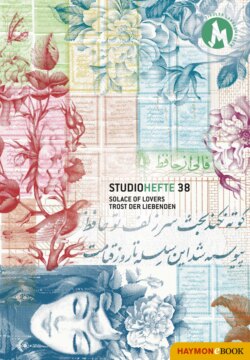Читать книгу Solace of Lovers. Trost der Liebenden - Helena Perena - Страница 15
ESFAHAN
Оглавление“Afsus ke anche borde am bakhtanist
Beshnakhte ha tamam nashnakhtanist
Bardashte am har anche bayad bogzasht
Bogzashte am har anche bardashtanist
What misfortune that everything that befalls me
must be lost again.
Everything I thought I knew about my life
was not suitable to be taught.
I’m leaving everything behind that I should be taking on.
I accept everything that I should have left behind.”
Abu Said Abol Kheir (967–1049)
On Maydan-e Naqsh-e Jahan (Half of the World Square), the first thing you notice is a silence you would never expect in a square of this size in the middle of the city: you hear the quiet jingle of the horse-drawn carriages and see the spray of fountains raining on the surface of the pond in the middle of the square. Approaching the two-storey arcades of little shops and boutiques all around the square, you hear the gentle hammering of the coppersmiths. An atmosphere of timeless tranquillity and expansiveness makes this a place to pause, to let your gaze wander, to capture details, to savour the spaciousness and serene beauty of this architecture. None of what the traveller perceives is overbearing, shrill and obtrusive; one element combines naturally with the next to form an incomparably harmonious whole. Shah Abbas employed a succession of no fewer than five architects to create the square, one of whom made himself scarce after he had doubts about the feasibility of the structural design of the Great Mosque and the Sheikh Lotfollah Mosque. The two buildings were to support domes weighing about 60 and 30 tons respectively, and the architect’s courage failed him shortly after the foundations were laid. And yet: it all looks as if it were made in one piece; everything is consistent, nothing needs to be added; no lines, projections, extensions or superfluous decorations irritate the eye. Everything is balanced in sensitive and harmonious proportions, and even the position of the mosque at the southern end of the square, angled toward Mecca and gently retracted, forms a perfect conclusion.
Esfahan, Azadegan Teahouse, Chah Haj Mirza, 2017 / Esfahan, Azadegan Teehaus, Chah Haj Mirza, 2017
At the opposite end is the Qeysarriyeh Gate, the entrance to the Grand Bazaar, which meanders along as a dense labyrinth of twisting alleys, backyards, crossways, entrances and exits without any recognisable end. Moped riders suddenly emerge from crooked side alleys that open up to the outside, then weave their elastic way past passers-by, traders and loads transported on small handcarts, disappearing with a splutter behind lengths of fabric and wooden frames. On bales of cloth at the edge of the alley, an old man dozes under female mannequins dressed in chadors; in a tiny cage above a spice shop, a canary sings. The voices of the muezzins respond, starting up one after the other as they call to late afternoon prayer. A wave of smells from cook-shops, herbal scents and musty spice aromas, smoke from a charcoal fire, with a sooty teapot quietly simmering in the embers. With nowhere for tired feet to rest on the bumpy cobblestones, you balance between the flotsam of things that treacherously seek to block your path and unpredictable encounters from the half-light that make you miss your step. And yet it is a joyful stumbling, a stagger and forward swoop, which comes from a restlessness, a desire to reach and recognise the goal.
